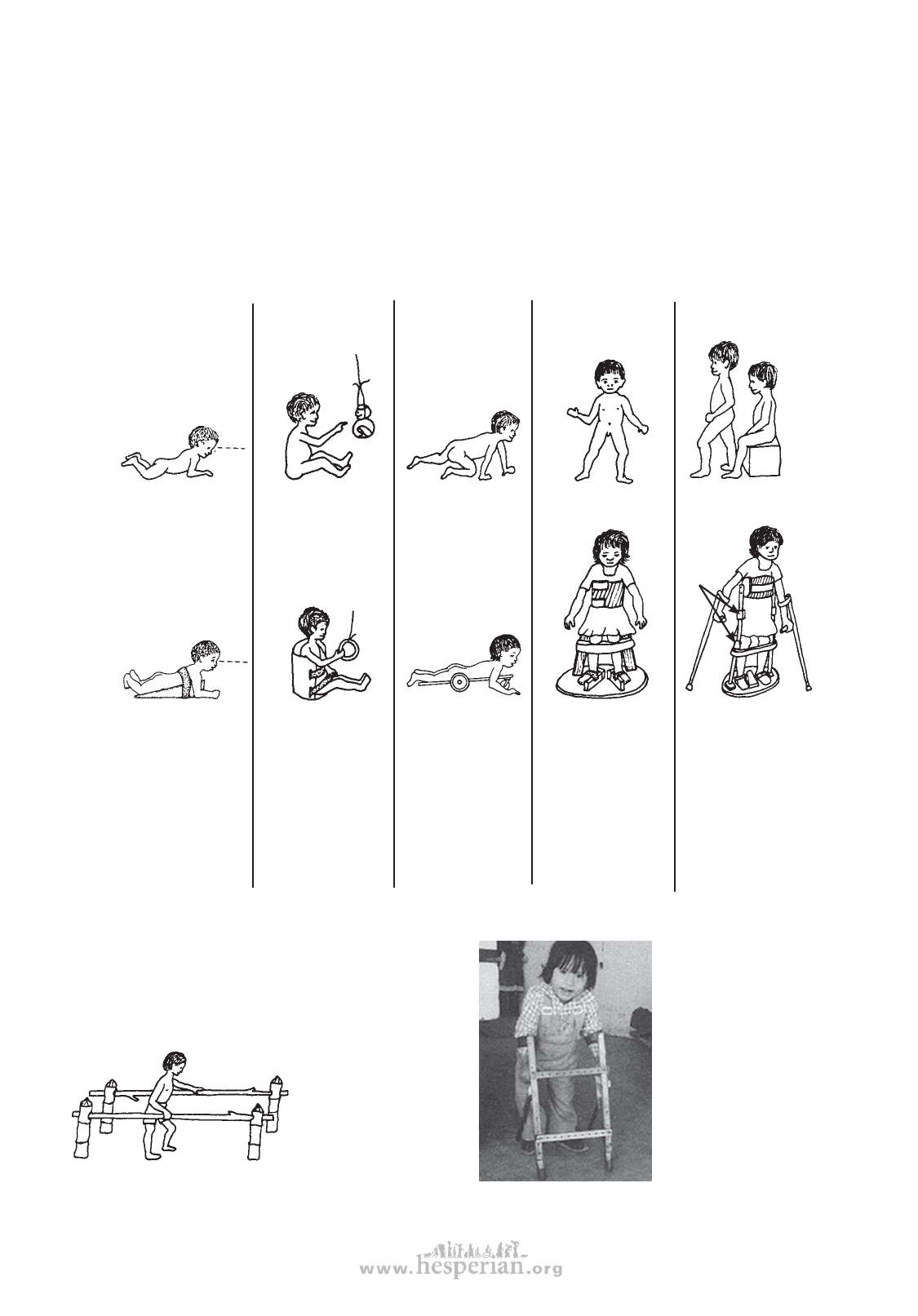
172 chapter 22
HELPING THE CHILD DEVELOP
Many children with spina bifida are paralyzed from the waist down. In spite of their
disability, it is important for them to develop their bodies, their minds, and their social
abilities as much as possible. Certain ‘adaptive aids’ can be used to help paralyzed
children go through the same stages of development as able-bodied children, at close to
the same age. (See the developmental chart on p. 292.)
For the child to progress through the early stages of development, it is important
that he can
SEE STRAIGHT
AHEAD
SIT WITH HIS
HANDS FREE
EXPLORE HIS
STAND WITH HIS
SURROUNDINGS HANDS FREE
SIT, STAND,
AND WALK
NORMAL
SPINA BIFIDA
hinges
If she cannot get
herself into a
position where she
can see what is
happening in front
of her, lie her on
a ‘wedge’ or fix a
carton or box so
she can sit leaning
back in it.
You can make a seat
from an old bucket
or some other
object, so that she
can sit and play.
You can make
a little cart that
helps her to move.
The cart can have
a handle so that
another person can
push it.
Make a standing
frame that holds
her in a standing
position. Holding
up the weight of her
body on her legs
will strengthen her
bones, so they will
not break as easily.
She can use a brace
that holds her up,
so that she can
walk with crutches.
It helps if the brace
has hip and knee
hinges so that she
can sit down (see
p. 575).
When adapting aids for children with
spina bifida, remember that each child
is different. Some children manage to
walk without braces, perhaps with the
aid of parallel bars like these, and later
crutches. Others will need above-knee
or below-knee
braces (see
Chapter 58).
Other children
will need
wheelchairs.
This child with
spina bifida
learned to walk
using elbow
crutches adapted
to form a walker.
As his balance and
control improved,
the supports on
the crutches were
gradually removed
until he could walk
with the crutches
alone.
Disabled village Children